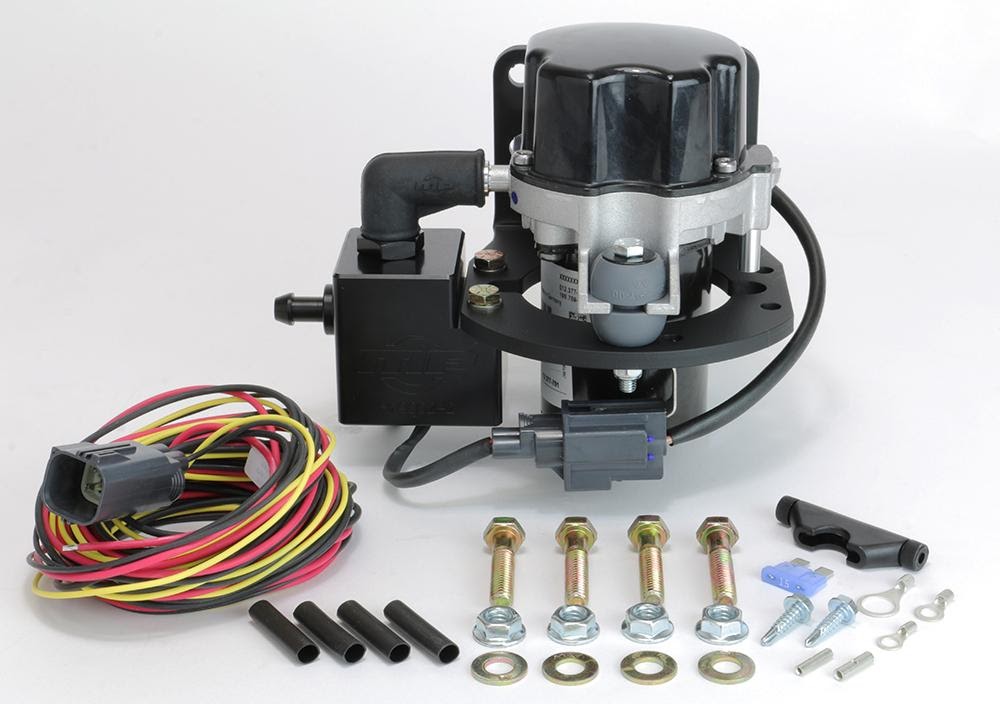Low Engine Vacuum for Brakes Is a Problem of the Past!

Posted by Stang-Aholics | Brake Maintenance, Silent Drive Vacuum Pump, Tech Tip
Struggling with a Hard Brake Pedal? A Quiet Vacuum Pump Could Be the Fix You Need
If you’ve upgraded your engine for performance and are now noticing a harder-than-usual brake pedal, the culprit might be a drop in engine vacuum. Power brake systems rely on sufficient vacuum to operate smoothly—and without it, you could be left pressing the brake pedal with both feet just to stop. Let’s walk through how to diagnose this issue and why an electric vacuum pump may be your best solution.
Hard Brake Pedal? Your Engine Might Be the Issue
Is Your Engine Producing Enough Vacuum?
Low engine vacuum is a common side effect of performance upgrades like larger cams or forced induction. When vacuum drops below the threshold needed for your brake booster—usually around 18 inches of mercury (Hg)—your brake pedal gets stiff, and braking becomes difficult and unsafe.
Symptoms of Low Brake Booster Vacuum:- Brake pedal feels extremely hard
- Braking effort increases dramatically
- Poor brake response, especially at idle or low RPMs
This lack of vacuum means your power brake system simply isn’t getting the help it needs.
What’s the Fix? Install a Vacuum Pump
How a Vacuum Pump Helps
A vacuum pump supplements or replaces the vacuum typically generated by the engine. It ensures your brake booster always receives enough vacuum to operate correctly—especially important if your engine no longer produces sufficient vacuum on its own.
But not all vacuum pumps are created equal.
Comparing Vacuum Pump Types
Piston-Style Vacuum Pumps
These traditional pumps generate vacuum using a piston mechanism. While effective, they are notoriously loud, often exceeding 85 decibels—comparable to a blender or a busy street. This level of noise can quickly become a driving annoyance.
Rotary Vane Vacuum Pumps
Modern rotary vane pumps—like the Silent Drive Vacuum Pump—offer key advantages:
- Significantly quieter operation, measuring around 65 decibels
- Smoother and more consistent vacuum output
- Advanced control module with a solid-state relay, replacing older-style mechanical switches for better reliability
So, Do You Need a Vacuum Pump?
If your vehicle—classic or modern—has undergone engine modifications that affect vacuum levels, a vacuum pump is a smart addition. It restores proper brake booster performance and enhances overall safety.
Why Choose the Silent Drive Vacuum Pump?
The Silent Drive Vacuum Pump is designed for:
- Quiet operation
- Reliable vacuum generation
- Simple installation
What Sets It Apart:
- Self-contained system – No need for external relays or switches
- Rotary vane design – Smooth, efficient, and ultra-quiet
- All-in-one package – Includes mounting hardware, vacuum hose, and step-by-step instructions
Installation is easy with a two-wire connection and single vacuum hose. The compact, waterproof housing and OEM-grade Yazaki weatherproof connector allow for flexible mounting in or under the vehicle.
Final Thoughts: Better Brakes Start with Better Vacuum
If you’re facing a stiff brake pedal, don’t wait. A quiet, high-quality electric vacuum pump like the Silent Drive can dramatically improve your braking performance—without disrupting your driving experience.
Need help selecting the right parts for your build?
Contact the team at Stang-Aholics for expert support and guidance.






You must login to post comments.